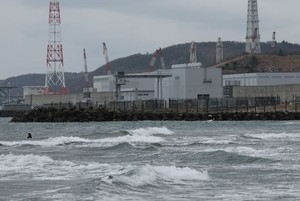By KOHEI MORIOKA/ Staff Writer
March 17, 2022 at 17:05 JST
 Shigeru Omi, the head of the government’s health expert panel on anti-virus measures, responds to questions from an opposition party lawmaker at an Upper House Budget Committee session on March 7. (Koichi Ueda)
Shigeru Omi, the head of the government’s health expert panel on anti-virus measures, responds to questions from an opposition party lawmaker at an Upper House Budget Committee session on March 7. (Koichi Ueda)
With light seen at the end of the tunnel, the government decided to lift all pre-emergency measures against COVID-19 in effect across Japan, covering 18 prefectures, including Tokyo and Osaka, on March 21.
The plan was discussed and approved by its health expert panel on anti-virus measures on the morning of March 17.
The plan was officially decided later on the day by the government after being reported to the Diet and undergoing other procedures.
If all goes as scheduled, the pre-emergency measures extended for up to 36 prefectures will be lifted for the first time in about two and a half months.
Prime Minister Fumio Kishida talked about “the sixth infection wave,” triggered by the spike in cases attributed to the Omicron variant from the start of the year, at a March 16 news conference.
“We are clearly seeing the exit (from the infection wave),” he said.
The government is starting to focus on the recovery of societal and economic activities.
The pre-emergency measures will be lifted for the following 18 prefectures: Hokkaido, Aomori, Ibaraki, Tochigi, Gunma, Saitama, Chiba, Tokyo, Kanagawa, Ishikawa, Gifu, Shizuoka, Aichi, Kyoto, Osaka, Hyogo, Kagawa and Kumamoto.
Although the hospital bed occupancy rate still tops 50 percent in Osaka Prefecture, the government has lowered the hurdle to lifting the pre-emergency measures, saying that they can be removed if the number of new infections or the bed occupancy rate is dropping.
The government included the new rules in its basic anti-virus policies, such as making it unnecessary for businesses to identify employees who have come in close contact with COVID-19 patients in the workplace.




















A peek through the music industry’s curtain at the producers who harnessed social media to help their idols go global.
A series based on diplomatic documents declassified by Japan’s Foreign Ministry
Here is a collection of first-hand accounts by “hibakusha” atomic bomb survivors.
Cooking experts, chefs and others involved in the field of food introduce their special recipes intertwined with their paths in life.
A series about Japanese-Americans and their memories of World War II